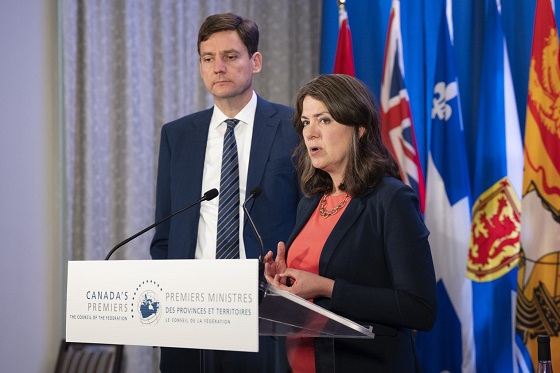Brownstone Institute
The Selfish Collective

Originally published by the Brownstone Institute
BY
Much of the debate surrounding Covid — and increasingly now, other crises — has been framed in terms of individualism vs. collectivism. The idea is that individualists are motivated by self-interest, while collectivists put their community first.
This dichotomy paints the collective voice, or the community, as the prosocial option of two choices, where the threat lies with recalcitrant individuals holding everyone else back. The individual threatens the common good because they won’t go along with the program, the program everyone else has decided upon, which is what is best for everyone.
There are several immediate problems with this logic. It is a string of loaded assumptions and false equivalencies: first, it equates the philosophy of collectivism with the idea of prosocial motivation; secondly, it equates prosocial behavior with conformity to the collective voice.
Merriam-Webster defines collectivism as follows:
1 : a political or economic theory advocating collective control especially over production and distribution also : a system marked by such control
2 : emphasis on collective rather than individual action or identity
Note that there is no mention here of internal motivations — and rightly so. The philosophy of collectivism emphasizes collectively organized behavioral patterns over those of the individual. There is no prescription for these reasons. They could be prosocially motivated, or selfish.
After the past couple of years of analyzing collectivist behavior during the Covid crisis, I have come to the conclusion that it is just as likely as individualism to be motivated by self-interest. In fact, in many ways, I would say it is easier to attain one’s selfish interests by aligning oneself with a collective than to do so individually. If a collective composed primarily of self-interested individuals unites over a common goal, I call this phenomenon “the selfish collective.”
When “Common Good” is Not Collective Will
One of the most simple examples I can give of a selfish collective is that of a homeowner’s association (HOA). The HOA is a group of individuals who have unified into a collective in order to protect each of their own self-interests. Their members want to preserve their own property values, or certain aesthetic characteristics of their neighborhood environment. In order to achieve this they often feel comfortable dictating what their neighbors can and cannot do on their own property, or even in the privacy of their own homes.
They are widely despised for making homeowners’ lives miserable, and for good reason: if they claim the right to safeguard the value of their own investments, doesn’t it stand to reason that other homeowners, with perhaps different priorities, have a similar right to rule over the little corner of the world they paid hundreds of thousands of dollars for?
The selfish collective resembles the political concept of “tyranny of the majority,” of which Alexis de Tocqueville wrote in Democracy in America:
“So what is a majority taken as a whole, if not an individual who has opinions and, most often, interests contrary to another individual called the minority. Now, if you admit that an individual invested with omnipotence can abuse it against his adversaries, why would you not admit the same thing for the majority?”
Social groups are made up of individuals. And if individuals can be selfish, then collectives made up of individuals with common interests can be equally selfish, attempting to steamroll their visions over the rights of others.
However, the selfish collective is not necessarily comprised of a majority. It could just as easily be a loud minority. It is characterized not by its size, but by its inherent attitude of entitlement: its insistence that other people must sacrifice increasingly high-level priorities in order to accommodate increasingly trivial priorities of its own.
This inverse relationship of priority valuation is what belies the true nature of the selfish collective, and distinguishes its motives from the true “common good.” Someone motivated by genuine social concern asks the question: “What are the priorities and goals of all community members, and how can we try to satisfy these priorities in a way that everyone finds acceptable?”
Social concern involves negotiation, tolerance of value differences, and the ability to compromise or see nuance. It involves genuinely caring about what others want — even (and especially) when they have different priorities. When this concern extends only to those in one’s “in-group,” it may appear to be prosocial, but is actually an extension of self-interest known as collective narcissism.
Collective Narcissism and Conformity
From the perspective of the selfish individual, collectivism provides a host of opportunities for achieving one’s goals — perhaps better than one could on one’s own. For the manipulative and calculating, the collective is easier to hide behind, and the ideal of the “greater good” can be weaponized to win moral support. For cowards and bullies, the strength of numbers is emboldening, and can help them overpower weaker individuals or coalitions. For more conscientious individuals, it can be tempting to justify one’s natural selfish inclinations by convincing oneself the group holds the moral edge.
In social psychology, collective narcissism is the extension of one’s ego beyond oneself to a group or collective to which one belongs. While not all the individuals involved in such a collective are necessarily narcissists themselves, the emergent “personality” of the group mirrors the traits of narcissistic individuals.
According to Dr. Les Carter, a therapist and creator of the Surviving Narcissism YouTube channel, these traits include the following:
- A heavy emphasis on binary themes
- Discouraging free thinking
- Prioritizing conformity
- Imperative thinking
- Distrusting or dishonoring differences of opinion
- Pressure to display loyalty
- An idealized group self-image
- Anger is only one wrong opinion away
What all of these traits have in common is an emphasis on unity rather than harmony. Instead of seeking coexistence among people or factions with differing values (the “social good” that includes everyone), the in-group defines a set of priorities to which all others must adapt. There is one “correct way,” and anything outside it has no merit. There is no compromise of values. Collective narcissism is the psychology of the selfish collective.
The Hidden Logic of Lockdown
Proponents of Covid restrictions and mandates have typically claimed they were motivated by social concern, while painting their opponents as antisocial menaces. But does this bear out?
I have no doubt that a great many people, motivated by compassion and by civic duty, genuinely strove to serve the greater good through following these measures. But at its core, I argue that the pro-mandate case follows the logic of the selfish collective.
The logic goes something like this:
- SARS-CoV-2 is a dangerous virus.
- Restrictions and mandates will “stop the spread” of the virus, thereby saving lives and shielding people from the harm it causes.
- We have a moral duty as a society to shield people from harm wherever possible.
- Therefore, we have a moral duty to enact restrictions and mandates.
Never mind the veracity of any one of these claims, which has already been the subject of endless debate over the past two and a half years. Let’s instead focus on the logic. Let’s assume for a second that each of the three premises above were true:
How dangerous would the virus have to be in order for the restrictions and mandates to be justified? Is any level of “dangerousness” enough? Or is there a threshold? Can this threshold be quantified, and if so, at what point do we meet it?
Likewise, how many people would restrictions and mandates need to save or shield before they are considered to be worthwhile measures, and what level of collateral damage from the measures is considered acceptable? Can we quantify these thresholds either?
What other “socially beneficial outcomes” are desirable, and from whose perspective? What other social priorities exist for various factions within the collective? What logic do we use to weigh these priorities against each other? How can we respect priorities that may weigh a lot to their respective advocates, but which directly compete or clash with the “socially beneficial outcome” of eliminating the virus?
The answers to these questions would help us organize our priorities within a larger, more complex social landscape. No one social issue exists in a vacuum; “Responding to SARS-CoV-2” is one possible social priority out of millions. What gives this priority in particular precedence over any of the others? Why does it get to be the top and only priority?
To date I have never seen a satisfactory answer to any of the above questions from proponents of mandates. What I have seen are abundant logical fallacies used to justify their preferred course of action, attempts to exclude or minimize all other concerns, rejection of or silence regarding inconvenient data, dismissal of alternative opinions, and an insistence that there is one “correct” path forward to which all others must conform.
The reason for this, I would argue, is that the answers don’t matter. It doesn’t matter how dangerous the virus is, it doesn’t matter how much collateral damage is done, it doesn’t matter how many people might die or be saved, it doesn’t matterwhat other “socially beneficial outcomes” we might strive for, and it doesn’t matter what anybody else might prioritize or value.
In the logic of the selfish collective, the needs and desires of others are afterthoughts, to be attended if, and only if, there is something left over once they get their way.
This particular collective has made “responding to SARS-CoV-2” their top priority. And in pursuit of that priority, all others can be sacrificed. This one priority has been granted carte blanche to invade all other aspects of social life, simply because the selfish collective has decided it is important. And in pursuit of this goal, increasingly trivial sub-priorities that are deemed relevant can now take precedence over increasingly higher-level priorities of other social factions.
The end result of this is the absurd micromanagement of other people’s lives, and the simultaneous cruel dismissal of their deepest loves and needs. People were forbidden from saying goodbye to dying parents and relatives; romantic partners were separated from each other; and cancer patients died because they were denied access to treatment, just to name a few of these cruelties. Why were these people told their concerns didn’t matter? Why did they have to be the ones to sacrifice?
The argument of the selfish collective is that individual freedom must end as soon as it risks negatively impacting the group. But this is a smokescreen: there is no unified collective perceiving “negative impacts” in a homogeneous way. The “collective” is a group of individuals, each with different sets of priorities and value systems, only some of whom have coalesced around a specific issue.
At the root of this entire discussion lies the following question: How, on a macro scale, should society allocate importance to the diverse, competing priorities held by the individuals that make it up?
The selfish collective, which represents a particular faction, attempts to obscure the nuance of this question by trying to conflate themselves with the entire group. They try to make it seem as if their own priorities are the only factors under consideration, while dismissing other elements of the debate. It is a fallacy of composition mixed with a fallacy of suppressed evidence.
By magnifying their own concerns and generalizing them to the whole group, the selfish collective makes it seem as if their goals reflect “the good of everyone.” This has a reinforcing effect because the more they focus attention on their own priorities relative to others, the more others will come to believe those priorities are worthy of attention, adding to the impression that “everyone” supports them. Those with different value systems are gradually subsumed into a collective unity, or erased.
This does not strike me as prosocial behavior — it is deception, egotism, and tyranny.
A truly prosocial approach would not shut out all other goals and insist on one way forward. It would take into account the different priorities and viewpoints of various factions or individuals, approach them with respect, and ask how to best facilitate some sort of harmony among their needs. Instead of prescribing behavior onto others it would advocate for dialogue and open debate, and it would celebrate differences of opinion.
A prosocial approach doesn’t elevate some nebulous, abstract, and misleading image of a “collective” above the humanity and diversity of the individuals who make it up.
A prosocial approach makes space for freedom.
Brownstone Institute
The Unmasking of Vaccine Science

From the Brownstone Institute
By
I recently purchased Aaron Siri’s new book Vaccines, Amen. As I flipped though the pages, I noticed a section devoted to his now-famous deposition of Dr Stanley Plotkin, the “godfather” of vaccines.
I’d seen viral clips circulating on social media, but I had never taken the time to read the full transcript — until now.
Siri’s interrogation was methodical and unflinching…a masterclass in extracting uncomfortable truths.
A Legal Showdown
In January 2018, Dr Stanley Plotkin, a towering figure in immunology and co-developer of the rubella vaccine, was deposed under oath in Pennsylvania by attorney Aaron Siri.
The case stemmed from a custody dispute in Michigan, where divorced parents disagreed over whether their daughter should be vaccinated. Plotkin had agreed to testify in support of vaccination on behalf of the father.
What followed over the next nine hours, captured in a 400-page transcript, was extraordinary.
Plotkin’s testimony revealed ethical blind spots, scientific hubris, and a troubling indifference to vaccine safety data.
He mocked religious objectors, defended experiments on mentally disabled children, and dismissed glaring weaknesses in vaccine surveillance systems.
A System Built on Conflicts
From the outset, Plotkin admitted to a web of industry entanglements.
He confirmed receiving payments from Merck, Sanofi, GSK, Pfizer, and several biotech firms. These were not occasional consultancies but long-standing financial relationships with the very manufacturers of the vaccines he promoted.
Plotkin appeared taken aback when Siri questioned his financial windfall from royalties on products like RotaTeq, and expressed surprise at the “tone” of the deposition.
Siri pressed on: “You didn’t anticipate that your financial dealings with those companies would be relevant?”
Plotkin replied: “I guess, no, I did not perceive that that was relevant to my opinion as to whether a child should receive vaccines.”
The man entrusted with shaping national vaccine policy had a direct financial stake in its expansion, yet he brushed it aside as irrelevant.
Contempt for Religious Dissent
Siri questioned Plotkin on his past statements, including one in which he described vaccine critics as “religious zealots who believe that the will of God includes death and disease.”
Siri asked whether he stood by that statement. Plotkin replied emphatically, “I absolutely do.”
Plotkin was not interested in ethical pluralism or accommodating divergent moral frameworks. For him, public health was a war, and religious objectors were the enemy.
He also admitted to using human foetal cells in vaccine production — specifically WI-38, a cell line derived from an aborted foetus at three months’ gestation.
Siri asked if Plotkin had authored papers involving dozens of abortions for tissue collection. Plotkin shrugged: “I don’t remember the exact number…but quite a few.”
Plotkin regarded this as a scientific necessity, though for many people — including Catholics and Orthodox Jews — it remains a profound moral concern.
Rather than acknowledging such sensitivities, Plotkin dismissed them outright, rejecting the idea that faith-based values should influence public health policy.
That kind of absolutism, where scientific aims override moral boundaries, has since drawn criticism from ethicists and public health leaders alike.
As NIH director Jay Bhattacharya later observed during his 2025 Senate confirmation hearing, such absolutism erodes trust.
“In public health, we need to make sure the products of science are ethically acceptable to everybody,” he said. “Having alternatives that are not ethically conflicted with foetal cell lines is not just an ethical issue — it’s a public health issue.”
Safety Assumed, Not Proven
When the discussion turned to safety, Siri asked, “Are you aware of any study that compares vaccinated children to completely unvaccinated children?”
Plotkin replied that he was “not aware of well-controlled studies.”
Asked why no placebo-controlled trials had been conducted on routine childhood vaccines such as hepatitis B, Plotkin said such trials would be “ethically difficult.”
That rationale, Siri noted, creates a scientific blind spot. If trials are deemed too unethical to conduct, then gold-standard safety data — the kind required for other pharmaceuticals — simply do not exist for the full childhood vaccine schedule.
Siri pointed to one example: Merck’s hepatitis B vaccine, administered to newborns. The company had only monitored participants for adverse events for five days after injection.
Plotkin didn’t dispute it. “Five days is certainly short for follow-up,” he admitted, but claimed that “most serious events” would occur within that time frame.
Siri challenged the idea that such a narrow window could capture meaningful safety data — especially when autoimmune or neurodevelopmental effects could take weeks or months to emerge.
Siri pushed on. He asked Plotkin if the DTaP and Tdap vaccines — for diphtheria, tetanus and pertussis — could cause autism.
“I feel confident they do not,” Plotkin replied.
But when shown the Institute of Medicine’s 2011 report, which found the evidence “inadequate to accept or reject” a causal link between DTaP and autism, Plotkin countered, “Yes, but the point is that there were no studies showing that it does cause autism.”
In that moment, Plotkin embraced a fallacy: treating the absence of evidence as evidence of absence.
“You’re making assumptions, Dr Plotkin,” Siri challenged. “It would be a bit premature to make the unequivocal, sweeping statement that vaccines do not cause autism, correct?”
Plotkin relented. “As a scientist, I would say that I do not have evidence one way or the other.”
The MMR
The deposition also exposed the fragile foundations of the measles, mumps, and rubella (MMR) vaccine.
When Siri asked for evidence of randomised, placebo-controlled trials conducted before MMR’s licensing, Plotkin pushed back: “To say that it hasn’t been tested is absolute nonsense,” he said, claiming it had been studied “extensively.”
Pressed to cite a specific trial, Plotkin couldn’t name one. Instead, he gestured to his own 1,800-page textbook: “You can find them in this book, if you wish.”
Siri replied that he wanted an actual peer-reviewed study, not a reference to Plotkin’s own book. “So you’re not willing to provide them?” he asked. “You want us to just take your word for it?”
Plotkin became visibly frustrated.
Eventually, he conceded there wasn’t a single randomised, placebo-controlled trial. “I don’t remember there being a control group for the studies, I’m recalling,” he said.
The exchange foreshadowed a broader shift in public discourse, highlighting long-standing concerns that some combination vaccines were effectively grandfathered into the schedule without adequate safety testing.
In September this year, President Trump called for the MMR vaccine to be broken up into three separate injections.
The proposal echoed a view that Andrew Wakefield had voiced decades earlier — namely, that combining all three viruses into a single shot might pose greater risk than spacing them out.
Wakefield was vilified and struck from the medical register. But now, that same question — once branded as dangerous misinformation — is set to be re-examined by the CDC’s new vaccine advisory committee, chaired by Martin Kulldorff.
The Aluminium Adjuvant Blind Spot
Siri next turned to aluminium adjuvants — the immune-activating agents used in many childhood vaccines.
When asked whether studies had compared animals injected with aluminium to those given saline, Plotkin conceded that research on their safety was limited.
Siri pressed further, asking if aluminium injected into the body could travel to the brain. Plotkin replied, “I have not seen such studies, no, or not read such studies.”
When presented with a series of papers showing that aluminium can migrate to the brain, Plotkin admitted he had not studied the issue himself, acknowledging that there were experiments “suggesting that that is possible.”
Asked whether aluminium might disrupt neurological development in children, Plotkin stated, “I’m not aware that there is evidence that aluminum disrupts the developmental processes in susceptible children.”
Taken together, these exchanges revealed a striking gap in the evidence base.
Compounds such as aluminium hydroxide and aluminium phosphate have been injected into babies for decades, yet no rigorous studies have ever evaluated their neurotoxicity against an inert placebo.
This issue returned to the spotlight in September 2025, when President Trump pledged to remove aluminium from vaccines, and world-leading researcher Dr Christopher Exley renewed calls for its complete reassessment.
A Broken Safety Net
Siri then turned to the reliability of the Vaccine Adverse Event Reporting System (VAERS) — the primary mechanism for collecting reports of vaccine-related injuries in the United States.
Did Plotkin believe most adverse events were captured in this database?
“I think…probably most are reported,” he replied.
But Siri showed him a government-commissioned study by Harvard Pilgrim, which found that fewer than 1% of vaccine adverse events are reported to VAERS.
“Yes,” Plotkin said, backtracking. “I don’t really put much faith into the VAERS system…”
Yet this is the same database officials routinely cite to claim that “vaccines are safe.”
Ironically, Plotkin himself recently co-authored a provocative editorial in the New England Journal of Medicine, conceding that vaccine safety monitoring remains grossly “inadequate.”
Experimenting on the Vulnerable
Perhaps the most chilling part of the deposition concerned Plotkin’s history of human experimentation.
“Have you ever used orphans to study an experimental vaccine?” Siri asked.
“Yes,” Plotkin replied.
“Have you ever used the mentally handicapped to study an experimental vaccine?” Siri asked.
“I don’t recollect…I wouldn’t deny that I may have done so,” Plotkin replied.
Siri cited a study conducted by Plotkin in which he had administered experimental rubella vaccines to institutionalised children who were “mentally retarded.”
Plotkin stated flippantly, “Okay well, in that case…that’s what I did.”
There was no apology, no sign of ethical reflection — just matter-of-fact acceptance.
Siri wasn’t done.
He asked if Plotkin had argued that it was better to test on those “who are human in form but not in social potential” rather than on healthy children.
Plotkin admitted to writing it.
Siri established that Plotkin had also conducted vaccine research on the babies of imprisoned mothers, and on colonised African populations.
Plotkin appeared to suggest that the scientific value of such studies outweighed the ethical lapses—an attitude that many would interpret as the classic ‘ends justify the means’ rationale.
But that logic fails the most basic test of informed consent. Siri asked whether consent had been obtained in these cases.
“I don’t remember…but I assume it was,” Plotkin said.
Assume?
This was post-Nuremberg research. And the leading vaccine developer in America couldn’t say for sure whether he had properly informed the people he experimented on.
In any other field of medicine, such lapses would be disqualifying.
A Casual Dismissal of Parental Rights
Plotkin’s indifference to experimenting on disabled children didn’t stop there.
Siri asked whether someone who declined a vaccine due to concerns about missing safety data should be labelled “anti-vax.”
Plotkin replied, “If they refused to be vaccinated themselves or refused to have their children vaccinated, I would call them an anti-vaccination person, yes.”
Plotkin was less concerned about adults making that choice for themselves, but he had no tolerance for parents making those choices for their own children.
“The situation for children is quite different,” said Plotkin, “because one is making a decision for somebody else and also making a decision that has important implications for public health.”
In Plotkin’s view, the state held greater authority than parents over a child’s medical decisions — even when the science was uncertain.
The Enabling of Figures Like Plotkin
The Plotkin deposition stands as a case study in how conflicts of interest, ideology, and deference to authority have corroded the scientific foundations of public health.
Plotkin is no fringe figure. He is celebrated, honoured, and revered. Yet he promotes vaccines that have never undergone true placebo-controlled testing, shrugs off the failures of post-market surveillance, and admits to experimenting on vulnerable populations.
This is not conjecture or conspiracy — it is sworn testimony from the man who helped build the modern vaccine program.
Now, as Health Secretary Robert F. Kennedy, Jr. reopens long-dismissed questions about aluminium adjuvants and the absence of long-term safety studies, Plotkin’s once-untouchable legacy is beginning to fray.
Republished from the author’s Substack
Brownstone Institute
Bizarre Decisions about Nicotine Pouches Lead to the Wrong Products on Shelves

From the Brownstone Institute
A walk through a dozen convenience stores in Montgomery County, Pennsylvania, says a lot about how US nicotine policy actually works. Only about one in eight nicotine-pouch products for sale is legal. The rest are unauthorized—but they’re not all the same. Some are brightly branded, with uncertain ingredients, not approved by any Western regulator, and clearly aimed at impulse buyers. Others—like Sweden’s NOAT—are the opposite: muted, well-made, adult-oriented, and already approved for sale in Europe.
Yet in the United States, NOAT has been told to stop selling. In September 2025, the Food and Drug Administration (FDA) issued the company a warning letter for offering nicotine pouches without marketing authorization. That might make sense if the products were dangerous, but they appear to be among the safest on the market: mild flavors, low nicotine levels, and recyclable paper packaging. In Europe, regulators consider them acceptable. In America, they’re banned. The decision looks, at best, strange—and possibly arbitrary.
What the Market Shows
My October 2025 audit was straightforward. I visited twelve stores and recorded every distinct pouch product visible for sale at the counter. If the item matched one of the twenty ZYN products that the FDA authorized in January, it was counted as legal. Everything else was counted as illegal.
Two of the stores told me they had recently received FDA letters and had already removed most illegal stock. The other ten stores were still dominated by unauthorized products—more than 93 percent of what was on display. Across all twelve locations, about 12 percent of products were legal ZYN, and about 88 percent were not.
The illegal share wasn’t uniform. Many of the unauthorized products were clearly high-nicotine imports with flashy names like Loop, Velo, and Zimo. These products may be fine, but some are probably high in contaminants, and a few often with very high nicotine levels. Others were subdued, plainly meant for adult users. NOAT was a good example of that second group: simple packaging, oat-based filler, restrained flavoring, and branding that makes no effort to look “cool.” It’s the kind of product any regulator serious about harm reduction would welcome.
Enforcement Works
To the FDA’s credit, enforcement does make a difference. The two stores that received official letters quickly pulled their illegal stock. That mirrors the agency’s broader efforts this year: new import alerts to detain unauthorized tobacco products at the border (see also Import Alert 98-06), and hundreds of warning letters to retailers, importers, and distributors.
But effective enforcement can’t solve a supply problem. The list of legal nicotine-pouch products is still extremely short—only a narrow range of ZYN items. Adults who want more variety, or stores that want to meet that demand, inevitably turn to gray-market suppliers. The more limited the legal catalog, the more the illegal market thrives.
Why the NOAT Decision Appears Bizarre
The FDA’s own actions make the situation hard to explain. In January 2025, it authorized twenty ZYN products after finding that they contained far fewer harmful chemicals than cigarettes and could help adult smokers switch. That was progress. But nine months later, the FDA has approved nothing else—while sending a warning letter to NOAT, arguably the least youth-oriented pouch line in the world.
The outcome is bad for legal sellers and public health. ZYN is legal; a handful of clearly risky, high-nicotine imports continue to circulate; and a mild, adult-market brand that meets European safety and labeling rules is banned. Officially, NOAT’s problem is procedural—it lacks a marketing order. But in practical terms, the FDA is punishing the very design choices it claims to value: simplicity, low appeal to minors, and clean ingredients.
This approach also ignores the differences in actual risk. Studies consistently show that nicotine pouches have far fewer toxins than cigarettes and far less variability than many vapes. The biggest pouch concerns are uneven nicotine levels and occasional traces of tobacco-specific nitrosamines, depending on manufacturing quality. The serious contamination issues—heavy metals and inconsistent dosage—belong mostly to disposable vapes, particularly the flood of unregulated imports from China. Treating all “unauthorized” products as equally bad blurs those distinctions and undermines proportional enforcement.
A Better Balance: Enforce Upstream, Widen the Legal Path
My small Montgomery County survey suggests a simple formula for improvement.
First, keep enforcement targeted and focused on suppliers, not just clerks. Warning letters clearly change behavior at the store level, but the biggest impact will come from auditing distributors and importers, and stopping bad shipments before they reach retail shelves.
Second, make compliance easy. A single-page list of authorized nicotine-pouch products—currently the twenty approved ZYN items—should be posted in every store and attached to distributor invoices. Point-of-sale systems can block barcodes for anything not on the list, and retailers could affirm, once a year, that they stock only approved items.
Third, widen the legal lane. The FDA launched a pilot program in September 2025 to speed review of new pouch applications. That program should spell out exactly what evidence is needed—chemical data, toxicology, nicotine release rates, and behavioral studies—and make timely decisions. If products like NOAT meet those standards, they should be authorized quickly. Legal competition among adult-oriented brands will crowd out the sketchy imports far faster than enforcement alone.
The Bottom Line
Enforcement matters, and the data show it works—where it happens. But the legal market is too narrow to protect consumers or encourage innovation. The current regime leaves a few ZYN products as lonely legal islands in a sea of gray-market pouches that range from sensible to reckless.
The FDA’s treatment of NOAT stands out as a case study in inconsistency: a quiet, adult-focused brand approved in Europe yet effectively banned in the US, while flashier and riskier options continue to slip through. That’s not a public-health victory; it’s a missed opportunity.
If the goal is to help adult smokers move to lower-risk products while keeping youth use low, the path forward is clear: enforce smartly, make compliance easy, and give good products a fair shot. Right now, we’re doing the first part well—but failing at the second and third. It’s time to fix that.
-
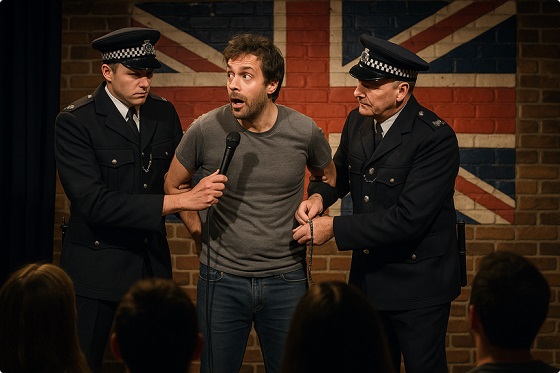
 Censorship Industrial Complex2 days ago
Censorship Industrial Complex2 days agoA Democracy That Can’t Take A Joke Won’t Tolerate Dissent
-

 Alberta19 hours ago
Alberta19 hours agoAlberta Sports Hall of Fame Announces Class of 2026 Inductees
-
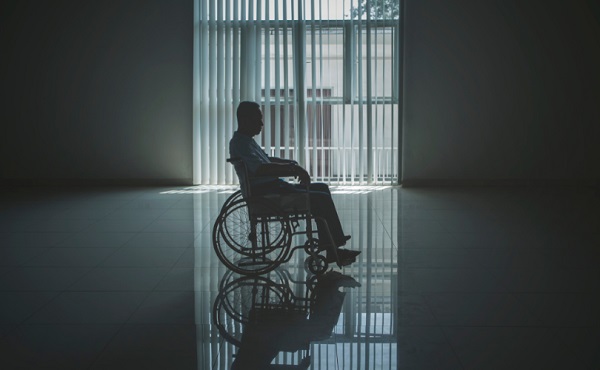
 MAiD1 day ago
MAiD1 day agoFrom Exception to Routine. Why Canada’s State-Assisted Suicide Regime Demands a Human-Rights Review
-

 Alberta2 days ago
Alberta2 days agoAlberta will defend law-abiding gun owners who defend themselves
-
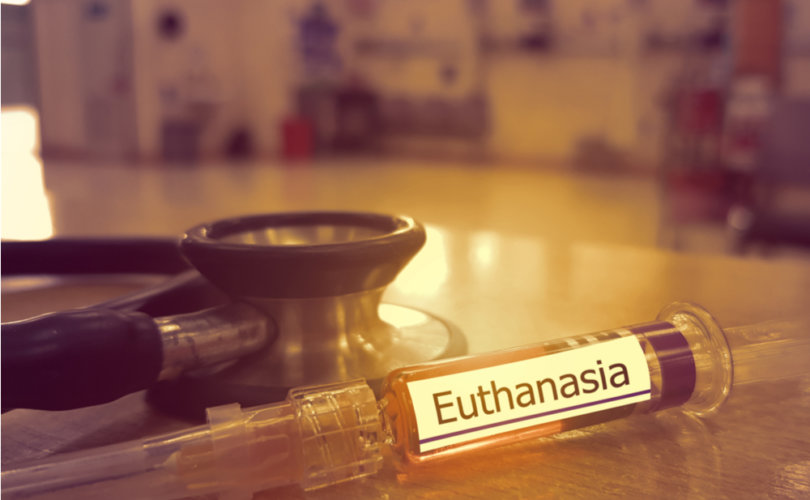
 MAiD2 days ago
MAiD2 days agoHealth Canada report finds euthanasia now accounts for over 5% of deaths nationwide
-
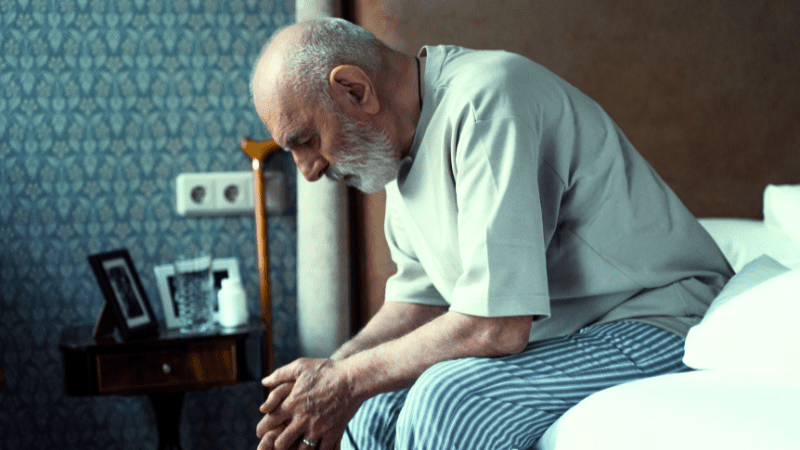
 Great Reset2 days ago
Great Reset2 days agoCanada’s MAiD (State Sanctioned Murder) Report Just Dropped
-

 Business2 days ago
Business2 days agoNew Chevy ad celebrates marriage, raising children
-

 Alberta2 days ago
Alberta2 days agoThis new Canada–Alberta pipeline agreement will cost you more than you think












